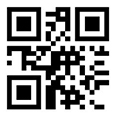
Tuina
Tuina manipulation refers to the diverse technical maneuvers applied during Tuina therapy. These techniques stimulate the body’s meridians, acupoints, or specific regions through varied operational methods. They are categorized as follows: pressing and kneading techniques like pressing, compressing, acupoint pressure, grasping, pinching. Friction-based techniques like flat pushing, scrubbing, circular rubbing, rolling, kneading. Vibratory techniques like patting, shaking. Joint mobilization techniques like rotating, thrusting, stretching. With approximately over 100 distinct techniques, practitioners may select or combine methods tailored to the patient’s condition and therapeutic objectives.
History
Tuina techniques originated from humanity’s primal instinctive actions—rubbing for warmth, pressing to soothe injuries, nurturing touch between mother and child, and interpersonal tactile interactions.
The earliest records in Oracle Bone Script Era’oracle bone inscriptions refer to basic techniques as“fu”, denoting rhythmic pressing and stroking.
The Yin Shu, Book of Guiding Exercises, excavated from the early Han tomb at Zhangjiashan, Jiangling, documents techniques like foot arch rubbing and finger shaking, alongside an intraoral reduction method for temporomandibular joint subluxation. The Recipes for Fifty-Two Ailments lists over 10 techniques, including pressing, rubbing, scratching, and scraping, as well as pressure hemostasis and medicated cloth massage. Yellow Emperor’s Inner Canon elaborates on manipulation names, diagnostics, indications, contraindications, and mechanisms.
In Three Kingdoms Period, Hua Tuo emphasized the risks of improper application and contraindications in Tuina therapy. In Jin Dynasty, Ge Hong’s Handbook of Prescriptions for Emergencies introduced advanced techniques like“lifting maneuvers”, compression, and lifting-pinching, alongside cosmetic massage and emergency finger-pressure methods. In Tang Dynasty, Wang Tao’s Arcane Essentials from the Imperial Library compiled earlier medical texts, meticulously citing sources to trace technique origins. In Song Dynasty, The Comprehensive Record of Sacred Benevolence systematized Tuina principles, stressing TCM pattern differentiation. In Jin Dynasty, Zhang Zihe classified Tuina as a“sweating method” within TCM’s eight therapeutic approaches. In Ming Dynasty, Wei Yilin’s Effective Formulas from Generations of Physicians pioneered traction suspension reduction for fractures, predating Western techniques by 600 years. In Ming-Qing Period, The Divine Techniques for Infant Care: Massage Classic outlined the Eight Pediatric Tuina Techniques.The Golden Mirror of Medicine established the Eight Bone-Setting Techniques, catalyzing diverse Tuina schools like acupressure Tuina, one-finger meditation Tuina, and internal energy Tuina.
Technical Requirements
The foundational principles of Tuina technique are endurance, dynamic strength, consistency, and gentleness. Endurance means the ability to sustain a technique over a defined period while maintaining continuity in motion and force. Dynamic strength refers to techniques must apply adjustable force, tailored to the individual’s condition, such as constitution, disease severity, treatment area, and technique type. Consistency is the niformity in rhythm, frequency, and pressure intensity throughout the manipulation. Gentleness, the sort of smooth, flexible movements with controlled force—avoiding stiffness, brute force, or abrupt violence. This embodies the principle of“light yet penetrating, firm yet non-constricting”.
These principles are interconnected and mutually reinforcing. Endurance allows techniques to gradually deepen their therapeutic effect. Consistency enhances gentleness through rhythmic coordination. The synergy of strength and skill achieves a balance of power and subtlety—harmonizing firmness with suppleness. In terms of mastery essentials, strength forms the foundation of effective manipulation, and technical precision is the cornerstone of therapeutic success. Both must be cultivated in tandem for optimal practice.
Classification
The names of Tuina techniques recorded in literature exceed 400 types, with over 100 commonly used in practice. These techniques are categorized in multifarious ways:
Motion style: pushing, grasping, pressing, rubbing.
Movement imagery: Lion Rolling an Embroidered Ball, Phoenix Spreading Its Wings.
Therapeutic effect: unblocking, harmonizing, soothing, tonifying.
Treatment area: Opening the Heavenly Gate, Riding a Horse Across the Milky Way.
Operational sequence: initiating motion, concluding motion.
Clinically, techniques are classified into six categories by movement mechanics:
Oscillating Techniques: Rhythmic, continuous motions using fingers, palms, or wrists. They include one-finger meditation pushing, spiraling, rolling, and kneading.
Friction Techniques: Linear or circular gliding motions with palms, fingers, or elbows. They include circular rubbing, scrubbing, pushing, rolling, and wiping.
Compression Techniques: Pressing or symmetrical squeezing with fingers, palms, or limbs. They include pressing, acupoint pressure, compressing, grasping, lifting, squeezing, and twisting.
Vibratory Techniques: High-frequency rhythmic stimulation. They include shaking and vibrating.
Percussive Techniques: Striking motions using palms, fists, fingers, or tools like mulberry sticks. They include patting, striking, and flicking.
Joint Mobilization Techniques: Passive joint movements. They include rotating, thrusting and pulling. It is noteworthy that terminology and execution vary among practitioners, which means some techniques share similar motions but differ in name, while others share names but differ in application.
As for modern clinical core techniques, the major commonly used methods include pushing, grasping, pressing, rubbing, rolling, scrubbing, rotating, thrusting, pulling, vibrating, striking, and smoothing. These motions could be applied individually or combined into compound techniques, such as pressing-kneading, pinching-kneading, grasping-pinching.
Manipulation Techniques
Pressing, pointing, compressing, circular rubbing, kneading, rolling-rubbing, twisting, pushing, scrubbing, wiping, sweeping-dispersing, grasping, shaking, palmar side-striking, pecking, patting, rotating, rolling.




